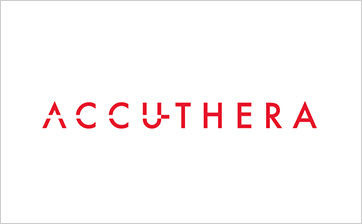预约演示
更新于:2025-05-07
PRTN3
更新于:2025-05-07
基本信息
别名 ACPA、AGP7、C-ANCA + [16] |
简介 Serine protease that degrades elastin, fibronectin, laminin, vitronectin, and collagen types I, III, and IV (in vitro) (PubMed:2033050, PubMed:28240246, PubMed:3198760). By cleaving and activating receptor F2RL1/PAR-2, enhances endothelial cell barrier function and thus vascular integrity during neutrophil transendothelial migration (PubMed:23202369). Plays a role in neutrophil transendothelial migration, probably when associated with CD177 (PubMed:22266279). Triggers inflammatory processes in neutrophils by interacting with ADGRG3 upstream of F2RL1/PAR2 activation (PubMed:36302784). |
关联
3
项与 PRTN3 相关的药物作用机制 ELA2抑制剂 [+2] |
在研机构 |
最高研发阶段临床2期 |
首次获批国家/地区- |
首次获批日期1800-01-20 |
靶点 |
作用机制 白细胞蛋白酶-3抑制剂 |
在研适应症 |
非在研适应症- |
最高研发阶段临床2期 |
首次获批国家/地区- |
首次获批日期1800-01-20 |
作用机制 ELA2抑制剂 [+1] |
在研机构- |
原研机构 |
在研适应症- |
最高研发阶段无进展 |
首次获批国家/地区- |
首次获批日期1800-01-20 |
4
项与 PRTN3 相关的临床试验EUCTR2022-000714-33-DE
Efficacy and safety of Tiprelestat for treatment of severe COVID-19 (COMCOVID trial) - COMCOVID trial
开始日期2023-02-21 |
申办/合作机构- |
NCT03522935
Safety and Tolerability of Escalating Doses of Subcutaneous Elafin (Tiprelestat) Injection in Healthy Normal Subjects
A multiple-ascending-dose (MAD), randomized, placebo-controlled, blinded trial to evaluate the safety, tolerability, pharmacokinetics, and pharmacodynamics of Elafin in healthy adult subjects. The purpose of this study is to assess Elafin that is being developed for treatment of PAH. Elafin inhibits elastase, an enzyme that is increased in pulmonary hypertension and is a major factor in the development of PAH. Elafin will be administered subcutaneously daily for 7 days in normal healthy subjects followed over a 28 day time period.
开始日期2019-03-18 |
申办/合作机构  Stanford University Stanford University [+3] |
EUCTR2010-019527-58-GB
EMPIRE-Elafin Myocardial Protection from Ischaemia RepErfusion injury - Effect of elafin on myocardial injury
开始日期2011-05-24 |
申办/合作机构  NHS Lothian NHS Lothian [+1] |
100 项与 PRTN3 相关的临床结果
登录后查看更多信息
100 项与 PRTN3 相关的转化医学
登录后查看更多信息
0 项与 PRTN3 相关的专利(医药)
登录后查看更多信息
5,160
项与 PRTN3 相关的文献(医药)2025-12-01·Molecular Biology Reports
Bio-consortia of Bacillus spp. induces defense gene expression and suppresses Orthotospovirus arachinecrosis in tomato
Article
作者: Saravanakumari, K ; Saranya, P S ; Sangeetha, C ; Harish, S ; Nivedha, M ; Anandhi, K
2025-12-01·Immunologic Research
Versatile roles for neutrophil proteinase 3 in hematopoiesis and inflammation
Review
作者: Wang, Hai-Juan ; Zhu, Hai-Yan ; Liu, Peng
2025-10-01·Spectrochimica Acta Part A: Molecular and Biomolecular Spectroscopy
Synergistic luminescence enhancement in bi-sensitized praseodymium-doped barium cerates: Implications for white light emission in optoelectronics
Article
作者: Sakthivel, P ; Veena, V P ; Greeshma, K ; Baby, Benjamin Hudson ; Shilpa, C K ; Ancy, S S ; Jasira, S V ; Nissamudeen, K M
26
项与 PRTN3 相关的新闻(医药)2025-04-19
·医药速览
概述我国类风湿性关节炎(RA)的患病率约为0.42%,患者总数约500万,男女比约为1∶4。RA的临床表现为滑膜炎,并逐渐出现关节软骨和骨破坏,最终导致关节畸形和功能丧失,可并发肺部疾病、心血管疾病、恶性肿瘤、骨折及抑郁症等。Update on the Pathomechanism, Diagnosis,and Treatment Options for Rheumatoid Arthritis,Cells 2020, 9, 880; doi:10.3390/cells9040880类风湿关节炎(RA)的免疫发病机制遗传因素100 多种等位基因多态性与疾病风险相关,MHC II 类等位基因尤其是HLA - DRB1等位基因关联性强。HLA - DRB1 等位基因含有在 β 链氨基酸残基 71 - 74 处的特定序列(“共享表位”),与氨基酸残基 11 和 13 共同形成抗原结合口袋,这种结构与类风湿因子(RF)和抗瓜氨酸化蛋白抗体(ACPA)的产生相关。T 细胞能够在 HLA - DRB1*04 的背景下识别瓜氨酸化抗原,而自身免疫性 B 细胞反应涵盖了大量瓜氨酸化蛋白质,这表明 MHC II 类分子在呈递抗原给 T 细胞,进而驱动 B 细胞产生自身抗体的过程中起到了关键作用,体现了 MHC II 类多态性与自身抗体产生之间的紧密联系。环境因素肠道菌群等环境暴露可能触发先天免疫,影响蛋白质抗原修饰,导致自身耐受性破坏。肠道菌群可以调节多种免疫细胞的功能,如调节 T 细胞(Treg)和辅助性 T 细胞(Th)的分化和活性。在 RA 患者中,肠道菌群的异常可能导致免疫细胞功能失调,例如使 T 细胞分化偏向促炎表型,从而促进炎症反应。正常情况下,肠道菌群有助于维持免疫系统的耐受状态。然而,在 RA 发病过程中,肠道菌群的改变可能破坏这种耐受平衡,引发自身免疫反应。例如,肠道菌群的失调可能影响肠道黏膜屏障功能,使抗原更容易进入体内,进而激活免疫系统,导致自身抗体的产生。鉴于肠道菌群在 RA 中的重要作用,调节肠道菌群可能成为一种新的治疗策略。例如,通过益生菌、益生元和粪菌移植等方法来改善肠道菌群的组成和功能,有望恢复免疫系统的平衡,减轻 RA 的炎症反应,为 RA 的治疗提供了新的方向。免疫细胞与信号网络异常多种免疫细胞类型和信号网络功能失常,引发适应不良的组织修复过程,主要损害关节,也可累及肺和血管系统。T 细胞免疫反应:HLA - DRB1 位点与 RA 相关,CD4⁺T 淋巴细胞驱动 RA,IL-6、IFN-γ、IL-17 等细胞因子参与,Th1、Th17 细胞起重要作用,T 细胞通过多种机制迁移至关节,其可塑性对免疫应答有重要意义,但功能作用尚未完全明确,调节性 T 细胞(Treg)功能可能受损,细胞因子 IL - 22 也参与炎症反应。B 细胞免疫反应自身抗体产生:自身抗体主要由 B 细胞产生,RF 和 ACPA 是重要的 RA 相关自身抗体,ACPA 对早期诊断和预测 RA 特异性高,其可通过多种机制诱导炎症,如激活免疫细胞、诱导 NETosis、激活补体系统、促进破骨细胞分化等,RF 在诊断中有一定价值但水平与疾病活动相关性存在争议。抗原呈递:B 细胞是重要抗原呈递细胞,在 RA 中可向 CD4⁺T 辅助细胞呈递自身抗原,循环中 T 滤泡辅助细胞(Tfh)和外周辅助细胞(Tph)频率增加,Tph 细胞可促进 B 细胞活化、增殖、分化和抗体产生,血清 IL - 21 水平与 RA 疾病活动相关指标呈正相关。细胞因子分泌:RA 患者外周血 B 细胞分泌多种细胞因子,TNF - α 可促进破骨细胞形成,调节性 B 细胞(Breg)分泌抗炎细胞因子抑制 RA 进展,活动期 RA 患者外周血中具有调节功能的 B 细胞数量减少。破骨细胞激活:记忆 B 细胞表达 RANKL,调节骨稳态,ACPA 阳性 RA 患者骨吸收更明显,血浆细胞也可促进破骨细胞生成。先天免疫介导的免疫反应:先天免疫系统在 RA 起始和进展中起重要作用,巨噬细胞是 RA 滑膜中最丰富的免疫细胞,产生多种炎性介质,M1/M2 巨噬细胞失衡与 RA 相关;树突状细胞(DC)在诱导耐受或自身免疫中起作用,其表型和功能复杂;自然杀伤(NK)细胞和先天淋巴细胞(ILC)在 RA 发病中也有一定作用,ILC 分布变化与 RA 发展相关,IL - 9 产生的 ILC2 细胞可促进炎症消退。Jang, S.; Kwon, E.-J.; Lee, J.J. Rheumatoid Arthritis: Pathogenic Roles of Diverse Immune Cells. Int. J. Mol. Sci. 2022, 23, 905. https:// doi.org/10.3390/ijms23020905不同阶段的检查点变化检查点 1:全身性自我耐受崩溃初始耐受破坏位置:关节外,如流行病学研究发现 RF 在滑膜炎前多年存在,抗瓜氨酸化和氨甲酰化抗原的自身抗体也在临床前期出现。免疫应答特点:RA 自身免疫针对翻译后修饰蛋白,具有高度多反应性,主要由外周耐受缺陷主导,遗传风险因素促进自身抗体产生,T 细胞在自身抗体产生和疾病进展中起关键作用。检查点 2:从无症状自身免疫到组织炎症的转变炎症触发因素:环境暴露等因素使疾病过程转移,免疫细胞进入滑膜,肠道微生物群等环境因素可能是风险因素,早期滑膜炎病例中 CD3⁺T 细胞常见,滑膜活检样本组织学表型可预测疾病。T 细胞异常与功能后果:CD4⁺T 细胞内在缺陷导致分化异常,与 DNA 修复机制缺陷和细胞生物能量重编程有关,如 ATM 和 MRE11A 表达降低影响 DNA 修复,导致端粒脆弱、线粒体 DNA 损伤等,使 T 细胞分化为短寿命效应 T 细胞(SLEC),引发滑膜炎症,还可能导致 T 细胞记忆反应减弱、寿命缩短、增殖压力增加等,影响宿主免疫力,如患者中 CD4⁺CD28⁻T 细胞具有早衰特征,与冠状动脉疾病存在共同发病机制。检查点 3:急性滑膜炎向慢性持续性滑膜炎的转变组织细胞变化:慢性滑膜炎使免疫细胞增殖压力增加,部分患者病情进展,其发病与局部组织环境相关,如滑膜成纤维细胞活化、组织侵袭性 T 细胞诱导炎症和淋巴样结构形成等,应用高分辨率技术发现滑膜组织中存在多种细胞亚群,包括成纤维细胞、巨噬细胞、T 细胞和 B 细胞等,各细胞亚群具有不同特征和功能,如部分成纤维细胞为促炎效应细胞,巨噬细胞有保护性和促炎性不同亚群,T 细胞包括多种功能亚群,B 细胞在滑膜炎症中也有一定作用,且滑膜 T 细胞和巨噬细胞是 TNF 的细胞来源,TNF 在 RA 滑膜炎中起重要作用。推文用于传递知识,如因版权等有疑问,请于本文刊发30日内联系医药速览。原创内容未经授权,禁止转载至其他平台。有问题可发邮件至yong_wang@pku.edu.cn获取更多信息。©2021 医药速览 保留所有权利往期链接“小小疫苗”养成记 | 医药公司管线盘点 人人学懂免疫学| 人人学懂免疫学(语音版)综述文章解读 | 文献略读 | 医学科普|医药前沿笔记PROTAC技术| 抗体药物| 抗体药物偶联-ADC核酸疫苗 | CAR技术| 化学生物学温馨提示医药速览公众号目前已经有近12个交流群(好学,有趣且奔波于医药圈人才聚集于此)。进群加作者微信(yiyaoxueshu666)或者扫描公众号二维码添加作者,备注“姓名/昵称-企业/高校-具体研究领域/专业”,此群仅为科研交流群,非诚勿扰。简单操作即可星标⭐️医药速览,第一时间收到我们的推送①点击标题下方“医药速览” ②至右上角“...” ③点击“设为星标
临床研究免疫疗法微生物疗法
2025-04-06
·抗体圈
类风湿关节炎是一种慢性、炎症性、全身性的自身免疫类系统疾病,由人体的免疫系统错误地攻击自身组织所致,高发于40岁-60岁的中青年女性。具有病程长、易反复、致残率高等特点,不仅严重影响患者的生活质量,也给患者家庭及社会带来巨大经济负担,又被称为“不死的癌症”。ADC除了肿瘤领域,在自身免疫性疾病、炎症和细菌感染和动脉粥样硬化等疾病领域也有越来越多的研究和应用。今天为大家解读一篇关于抗体偶联药物(ADC)在类风湿关节炎治疗中应用的文章,一起学习起来。ADCs通常由单克隆抗体(mAb)通过连接子与细胞毒性载荷结合而成,结合了mAb的靶向特异性和载荷的强效杀伤作用,实现对目标细胞的精准高效清除。除了在肿瘤学中的成熟应用外,ADCs目前在治疗类风湿关节炎(RA)等自身免疫性疾病的未满足需求方面展现出巨大的潜力。RA是一种长期高发的自身免疫性疾病,每年造成数十亿美元的经济负担,但目前仍缺乏副作用较小的精准靶向治疗。本文综述了RA的发病机制、现有疗法及其局限性,介绍了ADCs在RA治疗中的应用、ADCs的作用机制,并总结了临床前和临床试验中的ADCs。利用RA的一线治疗药物——抗风湿药(DMARDs)作为ADC的载荷,提出了一种ADC合成策略,可能提高针对RA等多因素疾病的治疗效率。DMARDs是唯一能够有限延缓RA疾病进展的药物,但其疗效因脱靶毒性而受限。因此,将其作为载荷有助于直接递送至靶向部位,减少脱靶毒性,从而提高治疗效果。引言类风湿关节炎(RA)是一种常见的慢性炎症性、病理复杂的疾病,导致显著的发病率、生活质量下降和每年数十亿美元的医疗支出。RA一词源自希腊语“rheuma”(流动或排出)、“arthron”(关节)和“itis”(炎症),准确描述了其特征性炎症和关节积液现象。患者通常表现为多关节僵硬和疼痛,导致活动受限。全球RA患病率估计为0.5%至1%,约影响2300万人。患病率因年龄、性别、家族史和调查人群而异。女性患病风险是男性的2-3倍,且发病率随年龄增长而上升。家族史也是RA的重要风险因素,约60%的病例与遗传相关。尽管RA的确切病因尚不明确,但近期研究表明遗传和环境因素的相互作用是疾病发展的关键。基因组研究显示,RA的发病和进展与主要组织相容性复合体II(MHC II)基因(如HLA基因)密切相关,这些基因在T细胞识别自身反应性肽段中起重要作用。RA是一种系统性疾病,影响多个器官和淋巴组织(关节外表现),但炎症的主要部位是关节滑膜。滑膜组织异常增生,伴随新生血管形成、滑膜内层过度增殖,并释放大量炎症细胞因子(如肿瘤坏死因子-α、白细胞介素-1、IL-17等)、侵袭性蛋白酶(如基质金属蛋白酶)和自身抗体(如类风湿因子和抗瓜氨酸化蛋白抗体)。这些异常由T细胞、B细胞、巨噬细胞和成纤维样滑膜细胞等炎症细胞的快速增殖和活化引起。此外,成纤维样滑膜细胞和破骨细胞的退化过程与蛋白酶共同导致骨和软骨组织的破坏,如图1所示。临床上,RA表现为慢性疾病,最初影响小关节(如掌指关节和近端指间关节),随后扩散至大关节。系统性炎症还可能影响其他组织和器官,导致类风湿结节、血管炎、间质性肺病、心肌炎、周围神经病变等。图1 炎症滑膜的病理生理微环境来证明RA的发病机制。精氨酸向瓜氨酸转化(瓜氨酸化)是由多种因素引起,包括遗传易感性、吸烟和预先存在的感染。APC将这些瓜氨酸化蛋白作为自身抗原提呈给T细胞,导致CD4+ Th细胞活化。这些活化的Th细胞分化为Th1和Th17,并分泌促炎细胞因子如TNF-α、IL-17和IL-1。这些细胞因子激活其他免疫细胞,如巨噬细胞,并将它们募集到滑膜上。炎症导致细胞外基质被破坏,并触发胶原酶释放、MMP合成和FLS激活。T细胞也帮助B细胞产生名为RF和ACPA的自身抗体。这些抗体与瓜氨酸化蛋白结合,形成免疫复合物,加剧炎症,导致血管翳形成、软骨恶化和关节畸形。1 当前RA治疗选择及其局限性目前,由于RA复杂的病理生理机制,尚无根治方法。RA是一种异质性疾病,为实现缓解或至少达到最低疾病活动度,需要多种作用机制不同的疗法。研究表明,80%未经充分治疗的患者在发病十年内会出现关节畸形,40%将丧失工作能力,凸显了及时精准治疗的重要性。在20世纪90年代之前,RA的治疗以卧床休息、糖皮质激素(Cs)或非甾体抗炎药(NSAIDs)为主。若无效,则采用改善病情的抗风湿药(DMARDs)作为一线治疗。然而,这种治疗方法效果有限,几年内常导致关节破坏、残疾和工作能力丧失。随着时间的推移,多种新型治疗药物和方法的发展提高了患者生活质量并降低了关节外表现的风险。目前,RA治疗包括非药物治疗和多种药物类别,旨在减轻炎症、延缓疾病进展、抑制关节损伤并改善患者整体生活质量。美国风湿病学会(ACR)提出的“达标治疗”原则建议以实现缓解或降低疾病活动度为治疗目标。1.1 非药物治疗早期治疗包括患者教育、运动、物理疗法以及减少吸烟、肥胖和高血压等风险因素。运动疗法对RA患者尤为有益,可增强肌肉骨骼功能和肌力,减轻关节疼痛和疲劳。水中运动、瑜伽和非抗阻训练是适合活动性RA患者的运动方式。物理疗法(如冷疗、温泉疗法和针灸)也能缓解疼痛和肿胀。饮食方面,地中海饮食结合运动可改善RA患者的生活质量。维生素D补充剂、益生菌、鱼油和γ-亚麻酸可能具有潜在治疗益处,但需谨慎使用减肥干预措施。RA患者常伴有焦虑和抑郁,多不饱和脂肪酸可能有助于缓解抑郁症状,但需进一步研究。关节手术在60岁以下患者中较少见,通常用于RA严重阶段。非药物治疗常与药物治疗联用以提高疗效和患者依从性。1.2 药物治疗目前RA的药物治疗主要包括五类:非甾体抗炎药(NSAIDs)、糖皮质激素(Cs)、改善病情的抗风湿药(DMARDs)、生物DMARDs(bDMARDs)和JAK抑制剂(JAKi)。尽管这些药物在缓解症状或延缓疾病进展方面显示出潜力,但每类药物均有其局限性(见表1)。根据ACR和欧洲抗风湿病联盟(EULAR)的建议,RA治疗采用两种策略:NSAIDs或Cs用于症状缓解,DMARDs用于疾病管理。表1 类风湿关节炎治疗中每种药物的局限性1.3 非甾体抗炎药(NSAIDs)和皮质类固醇(cs)在急性反应期,非甾体抗炎药通过阻断环氧化酶(COX),特别是COX-2的活性来减轻炎症和疼痛,COX-2通常在炎症条件下升高。当以较低剂量给药时,泼尼松和泼尼松龙似乎有益。由于其通过调节基因表达发挥抗炎和免疫抑制作用的复杂机制,Cs(也称为糖皮质激素)比NSAIDs更强效和有效。然而,Cs和NSAIDs都只能暂时缓解症状,不能阻止疾病进展。NSAIDs的作用机制涉及对前列腺素的抑制,因此长期使用这些药物会导致一些副作用,包括出血、溃疡、肾衰竭、心力衰竭、头晕、意识错乱等。Cs的抗炎和免疫抑制作用背后的复杂机制显示出比NSAIDs更强的效力和疗效,然而,NSAIDs的安全性略好。根据现有数据,Cs药物在缓解疼痛和减轻肿胀方面的短期效果有限。这些短暂的影响在几周内就会消失。长期使用会导致过多的系统性影响,包括骨削弱、关节软骨毒性、水潴留、体重增加、肌肉无力和免疫功能下降。根据一项观察性研究,即使剂量低于5 mg/d,泼尼松也会导致严重的副作用。此外,Cs药物具有负反馈回路,影响下丘脑-垂体-肾上腺(HPA)轴的控制,因此患者不能突然停药。此外,据观察,使用丙肝与感染风险增加相关,尤其是病毒感染,这在COVID-19大流行的情况下尤其令人担忧。1.4 经典抗关节炎药物(DMARDs)DMARDs是RA的一线治疗药物。这些药物有助于降低自身免疫活性,延缓或阻止关节恶化,从而诱导缓解。建议在可行的情况下尽快开始治疗,因为早期采用DMARD会产生更好的益处,尤其是考虑到DMARD是慢作用药物,有6周~ 6个月的延迟。研究表明,延迟DMARD治疗的患者发生影像学关节间隙狭窄和骨侵蚀的风险增加。目前给患者使用的主要合成DMARDs包括甲氨蝶呤(MTX)、磺胺嘧啶(SSZ)和羟氯喹(HCQ)。然而,这些药物的确切作用方式仍不清楚。甲氨蝶呤是治疗RA的一线药物。由于叶酸的代谢和脱靶作用,MTX会导致脱发、口腔炎、恶心、血小板减少、白细胞减少等血液学异常、肝毒性等副作用。据估计,20-30%的RA患者在治疗的第一年因无法耐受MTX引起的副作用而停用MTX。SSZ和HCQ是甲氨蝶呤治疗无效患者的替代物。据报道,这些药物也会引起一些副作用,包括疲劳、胃部不适、肠道问题、过敏反应,以及某些血细胞和蛋白质水平较低的情况。HCQ在RA患者中最显著的不良反应是眼部毒性(4 ~19%)。1.5 生物型DMARDs(bDMARDs )(bDMARDs)是靶向特定可溶性或细胞表面分子(如细胞因子、细胞因子受体或其他细胞膜抗原)的靶向特异性药物。这些药物最常见的是单克隆抗体(mAb)或受体复合物。它们要么破坏特定的细胞群,限制特定细胞群之间的相互作用,要么阻止特定配体与其受体的相互作用。此外,它们不能穿透细胞;相反,它们利用细胞表面或其他外部途径来介导其作用模式。bDMARDs的主要缺点是其单药治疗的疗效有限,这意味着生物制剂与其他DMARD如羟氯喹、甲氨蝶呤等联用时更有效。与其他类别的药物一样,bDMARDs也会导致严重的副作用,如蜂窝织炎、肺炎、中性粒细胞减少症、肝酶升高、血脂异常等。大约30% ~ 50%接受TNF-ɑ抑制剂治疗的患者表现出原发性和继发性失败。1.6 Janus激酶抑制剂(JAKi)许多与Jak/STAT通路直接或间接相关的细胞因子在介导RA患者疼痛的不同过程中至关重要。因此,对于通过可测量的方式对治疗产生应答(即肿胀的关节数量减少,但疼痛未改善至令人满意的水平)的患者,转移或联合靶向Jak/STAT通路的治疗可能进一步获益。研究表明,托法替布(JAKi)的疗效优于甲氨蝶呤,但其带状疱疹(HZ)发病率的增加和相对较高的恶性肿瘤发生率降低了其作为单药治疗的使用率。类似地,JAKi(特别是baricitinib和upadacitinib)也显示出了更高的疗效,但由于缺乏长期安全性数据以及由肺栓塞引起的不良反应和与HZ相关的感染风险增加,仍然不推荐作为RA的单药治疗。遗憾的是,服用baricitinib导致HZ风险的病理生理学基础仍未确定。然而,由于与其他JAKi相比,baricitinib对JAK2有更高的选择性,因此JAK2的功能可能在这一关联中发挥作用。根据Vollenhoven等人的一项研究,乌帕替尼显示出比MTX更好的临床应答,但不良事件发生率也较高,尤其是当剂量为30mg时。由于目前尚未获得JAKi单药治疗的长期安全性数据,因此需要通过进一步试验了解JAKi的安全性。1.7 联合用药bDMARDs与DMARDs联用可减轻炎症和放射学进展,提高bdmard(英夫利西单抗和阿达木单抗)的生物利用度,减少抗药物抗体的形成,这表明联用有可能延长治疗的持久性。Verhoeven等人(2022)的一项研究表明,与托珠单抗单药治疗相比,托珠单抗和MTX联合治疗在阻止影像学进展方面更成功。当患者对MTX单药治疗无应答时,TNFi(托珠单抗)和DMARD (MTX)的这一联合治疗是二线治疗。由于bdmard比dmard起病相对较快,因此它们有助于通过有效减轻滑膜炎来抑制影像学进展。然而,这种联合治疗对dmard所具有的脱靶毒性和局限性没有任何影响,这意味着需要加强这些药物的递送,以管理其剂量和脱靶副作用,以提高其疗效,如图2所示。图2 传统改善疾病的抗风湿药(DMARDs)和生物制剂DMARDs的局限性,联合治疗,以及常规DMARDs靶向给药对有效治疗类风湿关节炎的必要性2 靶向干预:抗体-药物偶联物(ADCs)ADC通过化学连接子将单克隆抗体与强效细胞毒性载荷结合,以克服单用mAb治疗某些疾病(如RA)时因杀伤力不足而受限的问题。这种靶向递送方法结合了mAb的精准靶向性和载荷的细胞杀伤作用,通过限制载荷对健康组织的暴露,减少脱靶毒性并扩大治疗窗口。在非肿瘤领域(如RA治疗),ADC仍处于研究阶段。理想的ADC需在血液循环中保持稳定,靶向特定细胞或组织,并最终在靶点附近释放细胞毒性药物。因此,ADC的开发需综合考虑靶点选择、靶向特异性mAb、细胞毒性载荷、连接子分子和特定偶联技术,如图3所示。图3 ADC组成部分2.1 靶抗原治疗性靶抗原或受体是ADC药物定位特定靶细胞的关键。选择合适靶点是ADC设计的首要任务。理想的靶抗原应在靶细胞上高表达,而在其他组织中低表达或无表达,以避免脱靶损伤。此外,靶抗原应为细胞表面分子,以便ADC识别。例如,RA治疗中ADC的有效靶点可以是参与RA发病机制的细胞因子(如IL-6、IL-1、IL-17、TNF-α等)或细胞(如T细胞和B细胞)。2.2 抗体部分mAb的选择和高抗原特异性是ADC设计的关键因素。低特异性的mAb可能与其他抗原发生交叉反应,导致与健康组织相互作用,引发脱靶毒性。理想的mAb应具有高抗原特异性、长血浆半衰期和低免疫原性。大多数ADC使用的mAb为IgG1亚型,因其能诱导抗体依赖性细胞介导的细胞毒性(ADCC)和补体依赖性细胞毒性(CDC)。IgG3因清除速率快、血清半衰期短而较少使用;IgG2易形成二聚体和聚集体,降低ADC浓度;IgG4虽能诱导抗体依赖性细胞介导的吞噬作用,但因Fab臂交换而效果有限。此外,ADC设计还关注小抗体片段(如Fab-药物偶联物和双抗体-药物偶联物),但其清除速率快于全长IgG,需进一步研究验证优势。ADC开发中还需考虑抗体的翻译后修饰(如糖基化、C端赖氨酸切割或脱酰胺化),这些修饰可能改变mAb的结构和药理活性。对于RA治疗,靶向免疫细胞和免疫调节剂的抗体可能具有双重作用,增强治疗效果。2.3 连接子连接子分子是影响ADC特异性、稳定性、安全性和整体治疗指标的重要因素。其核心作用是连接抗体与细胞毒性药物,避免ADC聚集和血浆中载荷的提前释放,确保载荷在靶点特异性释放。提高它们在循环系统中的稳定性,并将细胞毒性载荷传递到所需的部位。连接子分为可切割和不可切割两类。可切割连接子(在酸性内体或溶酶体中释放载荷,或在还原剂或蛋白酶(如组织蛋白酶B或谷胱甘肽)存在时切割。不可切割连接子依赖蛋白酶水解mAb释放载荷-连接子复合物。在RA病变组织中,巨噬细胞和中性粒细胞广泛存在,蛋白酶活性高,因此可选用对蛋白酶敏感(如缬氨酸-瓜氨酸肽连接子)或酸性环境敏感(如酰肼连接子)的可切割连接子。2.4 治疗药物目前,与ADC结合的主要细胞毒性药物包括强效微管蛋白抑制剂、免疫调节剂和DNA损伤化合物。上述药物大多早在多年前就被发现,但由于治疗范围有限,其发展被缩短。例如,开发蒽环类药物和类毒素等药物难以成功,因为它们的IC50值不足以在少量进入肿瘤细胞时起作用。它们是高效的细胞毒性药物,IC50值在nm(纳摩尔)和pm(皮摩尔)范围内,使用标准给药技术时毒性较差。相反,与ADC结合使药物直接递送到靶细胞,并将这些非常有效的药物的毒性降到最低。如上所述,治疗类风湿性关节炎的每一类药物都具有脱靶毒性。因此,可以合成ADC来克服这一限制。2.5 偶联技术除选择合适的mAb、连接子和载荷外,选择适当的偶联方法对ADC开发至关重要。常见的偶联位点为抗体上的赖氨酸和半胱氨酸残基,早期ADC药物多采用随机偶联。目前新开发的方法为位点特异性偶联,可生成均一的ADC制剂,如工程化半胱氨酸、酶促偶联和氨基酸插入技术(见表2)。表2 ADC药物不同偶联策略:随机和位点特异性3 用于RA治疗的临床前和临床中的ADCs糖皮质激素(Cs)在RA治疗中用于抑制疼痛和炎症,但其胃肠道、内分泌和肌肉骨骼副作用限制了应用。为克服这些局限性并保留抗炎特性,研究人员探索了Cs与抗体的偶联。Buttgereit等人开发了抗TNF-GRM ADC(ABBV-3373),由抗TNF抗体(阿达木单抗)和糖皮质激素受体调节剂(GRM)通过马来酰亚胺-Gly-Ala-Ala连接子偶联而成。在关节炎小鼠模型中,该ADC显示出比单用抗TNF抗体更强的抗炎效果。I期临床试验中也表现出良好的药代动力学。ABBV-3373已进入IIa期临床试验(NCT03823391),48例接受甲氨蝶呤治疗的患者以2:1比例随机分配至ABBV-3373组或阿达木单抗组。结果显示,ABBV-3373组在疗效和安全性(如上呼吸道感染、过敏反应和非心源性胸痛发生率更低)方面均优于阿达木单抗组。(ABBV-3373目前已经被停掉)Brandish等人开发了靶向CD74的ADC(抗CD74-flu449),通过新型焦磷酸缩醛连接子将GR激动剂与重组抗CD74克隆011-pAF偶联,显著增加了GR靶基因表达并抑制B细胞增殖。CD30是TNF受体家族成员,在淋巴细胞中过表达,其水平在RA血清和关节液中升高。Matsuhashi等人探索了Brentuximab vedotin(BV,原用于霍奇金淋巴瘤治疗)在RA中的应用。BV由抗CD30抗体(brentuximab)和抗有丝分裂药物MMAE通过缬氨酸-瓜氨酸连接子偶联而成。在胶原抗体诱导的关节炎(CAIA)小鼠模型中,高剂量BV(70 mg/kg)显著减轻关节炎严重程度,但低剂量(30 mg/kg,相当于临床剂量)效果不显著。血清和组织学分析证实,BV治疗组的细胞因子水平和炎症程度低于未治疗组。研究表明,BV可能通过多种机制(如对CD30+ T细胞和滑膜炎症细胞的细胞毒性作用,以及对CD30-CD30L相互作用的调节)治疗RA。近期研究还表明,CD30靶向ADC(如BV)可能对治疗甲氨蝶呤相关的淋巴增生性疾病和RA有效,但需进一步临床研究和长期随访验证。Lee等人研究了托珠单抗-阿仑膦酸盐(TCZ-ALD)偶联物在RA模型中的效果。结果显示,TCZ-ALD治疗组的软骨-骨接触面几乎无炎症细胞浸润,与对照组相当,显著优于单用ALD或TCZ。Yasunaga等人研究表明,抗IL-7R抗体与SN-38(通过缬氨酸-瓜氨酸连接子偶联)能有效靶向类固醇耐药性恶性细胞。当该抗体与MMAE偶联时,抗炎效果优于A7R-ADC-SN-38或单用抗体,提示A7R-ADC可能是治疗RA等自身免疫性疾病的新选择。4 新型ADC合成策略的展望尽管ADCs在肿瘤治疗中因其精准靶向和低脱靶毒性备受关注,但在RA等非肿瘤疾病中的应用仍局限于特定载荷。临床前和临床数据显示,通过抗体介导的靶向递送糖皮质激素、抗有丝分裂药物和骨关节炎药物等可减少脱靶毒性。RA的主要治疗药物DMARDs能延缓疾病进展,但其药代动力学差和脱靶毒性限制了疗效。因此,需优化DMARDs的递送方式以降低副作用并提高疗效。本文提出了一种新型ADC合成策略:以靶向RA发病相关细胞或免疫调节剂的mAb为载体,DMARDs为载荷(图4)。这种偶联可实现DMARDs的精准递送,减少脱靶毒性,并增强治疗效果。此外,由于RA病理环境中促炎免疫细胞的复杂相互作用,单一干预难以缓解症状。研究表明,bDMARDs与DMARDs联用可提高缓解率,但无法消除DMARDs的脱靶毒性。因此,推测利用ADC靶向递送DMARDs,结合mAb和DMARDs的双重疗效,可能提升RA治疗效果和患者依从性。图4 克服DMARDs和单克隆抗体在RA治疗中局限性的策略:ADC结合RA特异性mab的特异性,并以强效抗类风湿药物DMARDs为有效药物,可有效靶向和破坏RA发病机制中涉及的靶B细胞、T细胞、巨噬细胞或免疫调节剂。根据ADC的作用机制,DMARDs可通过抗体附着于靶细胞表面的特定抗原而直接递送至靶细胞。一旦结合,ADC通过内吞作用进入细胞,形成核内体。胞内体演变为胞内溶酶体,DMARDs会因为酸性条件或酶降解而被释放到细胞外。这一过程确保了DMARDs在靶细胞内的准确释放。然后,DMARDs可以破坏关键的细胞功能,最终促使细胞死亡,从而提供高精度,最大限度地减少脱靶效应,并提高治疗效果。5 结论RA治疗因DMARDs作用机制不明、脱靶毒性和延迟反应而困难重重。ADC作为肿瘤靶向治疗的新兴药物类别,正在风湿性疾病等领域探索应用。目前RA治疗中的ADC临床试验载荷为糖皮质激素、双膦酸盐或抗有丝分裂药物,但这些药物无法直接延缓RA进展。本文提出以DMARDs为载荷的新型ADC合成策略,通过精准递送减少副作用并增强疗效。未来研究可聚焦于开发稳定、特异性的连接子和偶联方法,优化RA治疗ADC。尽管ADC在RA治疗中前景广阔,但仍需进一步优化和研究。识别微信二维码,添加抗体圈小编,符合条件者即可加入抗体圈微信群!请注明:姓名+研究方向!本公众号所有转载文章系出于传递更多信息之目的,且明确注明来源和作者,不希望被转载的媒体或个人可与我们联系(cbplib@163.com),我们将立即进行删除处理。所有文章仅代表作者观点,不代表本站立场。
抗体药物偶联物
2025-02-16
·医脉通
其实这种程度的病变,很难达到叶女士现在的不适,其中是否另有隐情呢?
来源 | 医脉通
作者 | 昼辞
01
腰痛,几乎每个人都有过类似的经历,尤其是那些年纪较大的劳动人民,最为常见。
这不,骨科门诊外早已聚集了一波波候诊求医的患者,我们今天故事的主人公——叶兰(化名)女士也在其中。
“疼,疼得睡不着的那种……虽然不是很剧烈,但吃了止疼药之后仍会一直持续存在。最近一个多月来,我因为腰腿疼都没有睡好。”叶女士和医生描述着自己的病情,愁眉紧锁,面露难色。
医生为叶女士快速查体后,发现其脊柱无明显畸形,腰椎过伸活动疼痛受限,双下肢感觉异常,四肢肌力和肌张力正常;双侧腿后外侧皮肤浅感觉减退;双侧直腿抬高试验阴性,关节反射及病理征均阴性;双侧足背动脉波动可及,肢端皮温、血运良好。
为了进一步检查,骨科门诊医生将叶女士收治入院。
02
腰痛虽然常见,但对于临床医生来说,越常见越不能忽视细节,更需要仔细鉴别。那么,什么是腰痛的原因呢?
常见的腰腿疼痛大致可分为三种类型:肌肉型腰腿疼痛、脊柱型腰腿疼痛以及病理性腰腿疼痛。
肌肉型腰腿疼痛即是由于肌肉原因引发的腰腿不适,这一类腰腿疼痛是生活中最常见的一种腰腿不适,包括腰肌劳损、股四头肌紧张等。
而脊柱型腰腿疼痛则是由于脊椎或椎间盘等脊柱内结构引发的腰腿不适的总称,包括腰椎间盘膨出、突出、游离等。
最后一类病理性腰腿疼痛则是由于疾病因素导致的腰腿不适,比如风湿、膝骨关节炎等。而还有一种腰腿型不适就是“神经型腰腿痛”,即坐骨神经损伤所致。
“我平时就是干点农活儿,搬搬抬抬的,前段时间开始腰疼之后才干得少了。”关于活动变化,叶女士这样回答。
由于叶女士自述常年从事重体力劳动,因此医生考虑的主要因素还是前两类,在予以止痛处理的同时,予以完善关节磁共振明确诊断。
结果如下:关节影像学提示双侧骶髂关节及邻近软组织、肌间隙病变,考虑感染性病变;胸腰椎也有不同程度的退行性改变;胸片、心脏彩超等检查未见异常。
其实这种程度的病变,很难达到叶女士现在的不适,其中是否另有隐情呢?
就在等待完善检查期间,叶女士开始出现了咳嗽、咳痰、流涕,她说,“也许是昨天空调开得有些低,可能是着凉感冒了吧。”
年轻医生顺着这个思路,嘱患者服用感冒药,但细心的主治医师却要求给患者再查一下胸部CT,并在影像学结果回报后请呼吸科医生会诊。
03
果不其然,叶女士的胸部CT提示:左肺下叶背段占位,伴左肺下叶背段支气管变窄,另双肺多发占位,部分伴小空洞形成,先考虑为感染性病变,金葡菌感染及肺克菌感染皆有可能,其他感染性病变不能排除,为肺癌伴肺内转移或均为转移瘤待除。
看到这一长串的字眼,既有“感染”,还有“肿瘤”,不免增加了患者的焦虑和心理负担。
图源:作者提供
而呼吸科医生会诊后建议给患者做纤支镜检查,必要时活检加以明确,毕竟病理才是“金标准”。
同时,叶女士也被转到了呼吸科,医生继续予以莫西沙星抗感染治疗,辅以止痛、消肿等处理,这也不禁让管床医生细细思考:如果真的是肺部感染造成的肺部空洞等,那么病人也没有发热等急性中毒症状,呼吸道症状也比较轻微,更无法解释肺内的其他占位性病变。
而其他的抽血检查,譬如肿瘤标记物、感染性指标、血常规等,这些依据都不足以支持目前的症状体征。
主任查房时,再次仔细阅片,发现叶女士肺部占位的结节浸润影,又伴有空洞,既不像单纯的感染,又不似只有肿瘤。难道是兼而有之,或是另有乾坤?
此时,自身免疫性疾病的可能性便陡然上升了!
于是,医生又给叶女士加查了自身免疫全套、ANCA相关性抗体、抗蛋白酶抗体等血检项目。结果显示,抗蛋白酶3抗体IgG及抗核抗体阳性,考虑韦格氏肉芽肿相关血管炎可能;而且复查胸部CT,其团块影也较前增大。
没想到,众里寻她千百度,病因竟指向这个问题。
04
当然,这样的结果还需要穿刺活检的病理才是最有力的证明。在和病人及家属充分沟通病情后,获得了同意。
风湿免疫科医生给出的意见是:
1.建议骶髂关节穿刺、组织培养、NGS检查;
2.继续贵科抗感染治疗,等感染控制后复查抗蛋白酶3抗体IgG。
同时与骨科原经管医生沟通,考虑目前骶髂关节病灶程度轻,暂不需穿刺。综合权衡之下,最终建议先行CT引导下肺组织穿刺送检相关病理、病原检测,患者及家属表示同意。
而后肺穿刺组织NGS回报:人疱疹病毒4型(BB病毒)序列数:344,人疱疹病毒6B型序列数:19。
病理提示纤维素性坏死及肉芽组织,间质大量急慢性炎症细胞浸润,未见肿瘤细胞,MGS未见细菌、真菌、结核证据。
目前仍考虑韦格氏肉芽肿相关血管炎可能,医生予以甲泼尼龙抗炎、洛索洛芬钠、氟比洛芬酯止痛、乙哌立松缓解肌紧张等处理。
05
就在众人都以为叶女士病情就要好转时,她双侧臀部再发疼痛,腰痛也有所加剧,并出现了发热症状,体温高达38.1℃,医生考虑莫西沙星抗感染效果欠佳,根据病情升级抗生素为利奈唑胺。
复查胸部CT可见病灶内部分空洞已经愈合,但其他病灶更多了,特殊感染亦不能排除,尤其是真菌性感染。
由于上一次的肺组织活检取材结果不够满意,因此需要再次安排气管镜检查,送检了肺泡灌洗液病原学和肺组织病理检查,结果真的证实了真菌性感染以及肉芽肿性炎症。
那么,这个韦格纳肉芽肿病究竟是何方神圣呢?竟然让患者辗转三个科室才最终确诊。
这是一种原因不明的累及全身多个系统的疾病,其标志性病理改变为坏死性、肉芽肿性血管炎,典型临床特征为累及上呼吸道、肺脏和肾脏的“三联征”。近年来本病又被称为肉芽肿性多血管炎(GPA)。
韦格纳肉芽肿病的病因至今尚不明确,目前认为其发病可能与遗传、感染和免疫因素有关。该病无喘息样症状,外周血嗜酸粒细胞增高不明显,主要是c-ANCA和(或)抗PR3-ANCA阳性,X线胸片特征性表现包括结节、空洞,且表现为多形、多变,活检组织病理可见少量嗜酸粒细胞。这也与叶女士的部分症状“不谋而合”。
轻型或局限型早期病例可单用糖皮质激素治疗,若疗效不佳应尽早使用环磷酰胺;有肾受累或下呼吸道病变者,开始治疗即应联合应用糖皮质激素与环磷酰胺;危重症可用大剂量甲泼尼龙冲击治疗。
对环磷酰胺不能耐受者可选用甲氨蝶呤,维持至病情缓解;上述治疗效果不佳者可试用环孢素、硫唑嘌呤、麦考酚吗乙酯、雷公藤总苷等,也可考虑应用生物制剂如利妥昔单抗等。
最终,经过系统评估及用药治疗后,叶女士的病情才算有了明显改善。
医生感叹,所幸发现得早,没有让这隐秘的症状掩盖真实的病情。接下来的时间,定期随访和规范用药即可。
参考资料:
[1] Pagnoux C,Guillevin L.Treatment of granulomatosis with polyangiitis (Wegener’s)[J].Expert Review of Clinical Immunology,2015,11(3):339-348.
[2] 嗜酸性肉芽肿性多血管炎诊治规范多学科专家共识编写组.嗜酸性肉芽肿性多血管炎诊治规范多学科专家共识[J].中华结核和呼吸杂志,2018,41(7):514-521.
责编|米子 阿泰
封面图来源|视觉中国
重磅!中纪委发文:促进全国医疗服务价格项目统一规范 | 医脉政事儿
这36个科室的创意元宵祝福语太走心了,网友:有种诡异的吉祥感,怕不是想让医院倒闭吧
医脉通是专业的在线医生平台,“感知世界医学脉搏,助力中国临床决策”是平台的使命。医脉通旗下拥有「临床指南」「用药参考」「医学文献王」「医知源」「e研通」「e脉播」等系列产品,全面满足医学工作者临床决策、获取新知及提升科研效率等方面的需求。
☟戳这里,更有料!
分析
对领域进行一次全面的分析。
登录
或

Eureka LS:
全新生物医药AI Agent 覆盖科研全链路,让突破性发现快人一步
立即开始免费试用!
智慧芽新药情报库是智慧芽专为生命科学人士构建的基于AI的创新药情报平台,助您全方位提升您的研发与决策效率。
立即开始数据试用!
智慧芽新药库数据也通过智慧芽数据服务平台,以API或者数据包形式对外开放,助您更加充分利用智慧芽新药情报信息。
生物序列数据库
生物药研发创新
免费使用
化学结构数据库
小分子化药研发创新
免费使用


